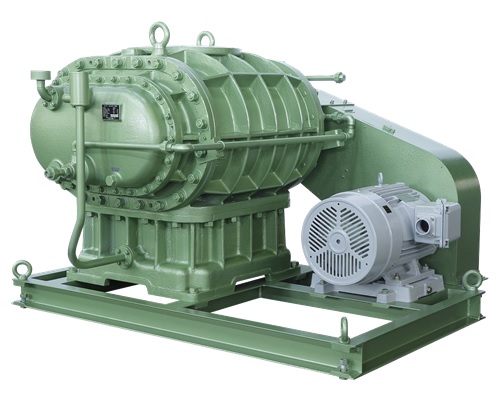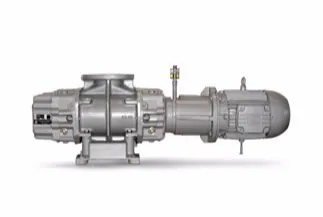Product Description
Gas-Cooling Roots Pump Rotary Portable Industrial Mini Vane Scroll Reciprocating Diaphragm Centrifugal Positive Displacement Best Suppliers DC AC Vacuum Pump
industrial vacuum pumps
Rotary vane: Rotary vane pumps are comprised of a series of vanes that are mounted to a rotor that turns inside a cavity. As the vanes rotate, centrifugal force extends them from their individual slots, forming compression cells that get larger to draw air in from the intake and smaller to push air out the exhaust.
Articulated piston: An articulated piston industrial vacuum pump operates in a manner similar to that of an automobile engine. As the piston moves downward inside the cylinder, air is drawn in through the intake valve. During the piston’s upward stroke, the air is permitted to escape via an exhaust valve. Two spring-backed piston rings are used to seal the piston to the cylinder.
Screw: Rotary screw pumnps include 2 parallel rotary screws in the pump housing. The screws are synchronized to turn in opposite directions, which causes the compression action to occur. The gas is compressed in the direction of the pump’s discharge port.
Liquid ring: Liquid ring pumps also operate via positive displacement. During operation, the pump’s impeller rotates inside the pump casing. A rotating liquid ring then seals the impeller and its blades. Liquid is sucked into the compression chamber to keep the ring stable. Conveyed gas is compressed during each impeller revolution.
/* January 22, 2571 19:08:37 */!function(){function s(e,r){var a,o={};try{e&&e.split(“,”).forEach(function(e,t){e&&(a=e.match(/(.*?):(.*)$/))&&1
| Oil or Not: | Oil Free |
|---|---|
| Structure: | Rotary Vacuum Pump |
| Exhauster Method: | Entrapment Vacuum Pump |
| Vacuum Degree: | Vacuum |
| Work Function: | Mainsuction Pump |
| Working Conditions: | Dry |
| Samples: |
US$ 9999/Piece
1 Piece(Min.Order) | |
|---|

How Do You Select the Right Size Roots Vacuum Pump for a Specific Application?
Selecting the right size Roots vacuum pump for a specific application requires careful consideration of various factors. Here’s a detailed explanation:
1. Determine the Required Pumping Speed: The pumping speed is a crucial parameter that indicates the volume flow rate of gas that the Roots vacuum pump can handle. To select the right size pump, you need to determine the required pumping speed for your application. Consider factors such as the volume of the system being evacuated, the gas load, and the desired evacuation time. The required pumping speed will help narrow down the options and identify pumps that can meet your application’s demands.
2. Consider the Ultimate Vacuum Level: The ultimate vacuum level is the lowest pressure that the Roots vacuum pump can achieve under ideal conditions. Different applications have varying vacuum level requirements. Determine the desired ultimate vacuum level for your application, keeping in mind factors such as the sensitivity of the process, the presence of moisture or contaminants, and the specific requirements of the downstream equipment or processes. Ensure that the selected pump can reach the required vacuum level.
3. Evaluate Gas Composition and Characteristics: The composition and characteristics of the gas being pumped are essential considerations. Some gases, such as condensable vapors or corrosive gases, may require special pump features or materials to ensure efficient and safe operation. Consider the gas composition, including its chemical properties, temperature, and any potential challenges it may pose to the pump’s performance or longevity. Consult the pump manufacturer or specialist for guidance on selecting a pump suitable for handling the specific gas or gas mixture in your application.
4. Account for System Constraints and Operating Conditions: Assess the system constraints and operating conditions that may impact the pump’s performance. Factors such as the available space for the pump, power supply requirements, cooling options, and noise limitations should be taken into consideration. Additionally, consider any specific operating conditions such as temperature extremes, high-altitude operation, or continuous-duty requirements. Ensure that the selected pump is compatible with the system constraints and can operate reliably under the anticipated operating conditions.
5. Consult Manufacturer Specifications and Performance Curves: Review the manufacturer’s specifications and performance curves for the Roots vacuum pumps under consideration. These documents provide detailed information about the pump’s capabilities, operating ranges, and performance characteristics. Pay attention to parameters such as pumping speed, ultimate vacuum level, power requirements, and any specific features or limitations. Compare the specifications with your application requirements to identify pumps that align with your needs.
6. Seek Expert Advice: If you are unsure about the pump selection process or have complex application requirements, it is recommended to seek advice from pump manufacturers or specialists. They can provide valuable insights, recommend suitable pump models, and assist in evaluating your specific application needs.
7. Consider Future Expansion and Flexibility: When selecting a Roots vacuum pump, consider the potential for future expansion or changes in your application. If there is a possibility of increased gas load or system requirements in the future, it may be advantageous to select a slightly larger pump to accommodate potential growth and ensure long-term suitability.
In summary, selecting the right size Roots vacuum pump involves determining the required pumping speed, considering the ultimate vacuum level, evaluating gas composition and characteristics, accounting for system constraints and operating conditions, consulting manufacturer specifications, and seeking expert advice when needed. By carefully considering these factors, you can choose a Roots vacuum pump that meets the specific requirements of your application, ensuring efficient and reliable operation.

What Is a Roots Vacuum Pump, and How Does It Work?
A Roots vacuum pump, also known as a Roots blower or a rotary lobe pump, is a type of positive displacement vacuum pump that is widely used for various industrial applications. Here’s a detailed explanation of what a Roots vacuum pump is and how it works:
A Roots vacuum pump consists of two synchronized rotors, known as lobes or impellers, that rotate in opposite directions within a housing. The lobes have a unique helical shape with multiple lobes, which allows them to trap and move gas efficiently. The rotors are synchronized with the help of timing gears to maintain precise clearances between the lobes and the housing.
The operation of a Roots vacuum pump can be described in the following steps:
1. Inlet Stage: The process begins with the lobes rotating in opposite directions. As the lobes rotate, the volume between them and the housing gradually increases, creating a larger space at the inlet side of the pump. This expansion of the volume causes the gas to enter the pump through the inlet port. The gas is drawn in due to the pressure difference between the inlet and the pump’s internal chamber.
2. Compression Stage: As the gas enters the pump, it gets trapped in the spaces between the lobes and the housing. As the lobes continue to rotate, the trapped gas gets carried along the rotating lobes. The gas is essentially trapped in the pockets formed by the lobes and the housing. The rotating lobes then compress the gas as they move towards the outlet side of the pump.
3. Outlet Stage: As the lobes approach the outlet side of the pump, the volume between them and the housing decreases, resulting in the compression of the trapped gas. This compression raises the pressure of the gas, causing it to be expelled through the outlet port of the pump. The expelled gas is then discharged into the atmosphere or directed to a downstream process or another vacuum pump, depending on the application.
It’s important to note that a Roots vacuum pump operates as a non-contacting pump, meaning that there is no physical contact between the lobes or between the lobes and the housing. This characteristic eliminates the need for lubrication within the pump and reduces the risk of contamination or oil vapor backstreaming into the vacuum system.
Roots vacuum pumps are known for their high pumping speed and ability to handle large volumes of gas. However, they are not capable of achieving high vacuum levels on their own. To achieve higher vacuum levels, a Roots pump is often used in conjunction with other vacuum pumps, such as rotary vane pumps or diffusion pumps, in a hybrid or combination pumping system.
In summary, a Roots vacuum pump operates based on the principle of positive displacement. It utilizes synchronized rotating lobes to trap and compress gas, allowing it to be discharged at a higher pressure. The non-contacting design of the pump eliminates the need for lubrication and reduces the risk of contamination. Roots vacuum pumps are commonly employed in various industrial applications, especially when high pumping speed and large gas handling capacity are required.


editor by CX 2024-03-28